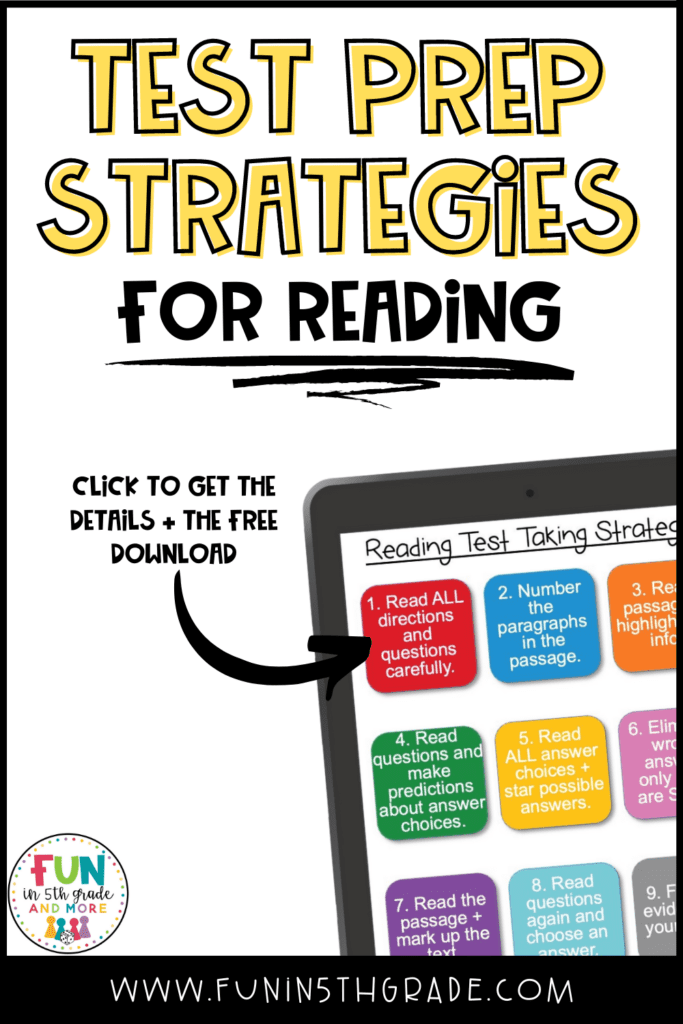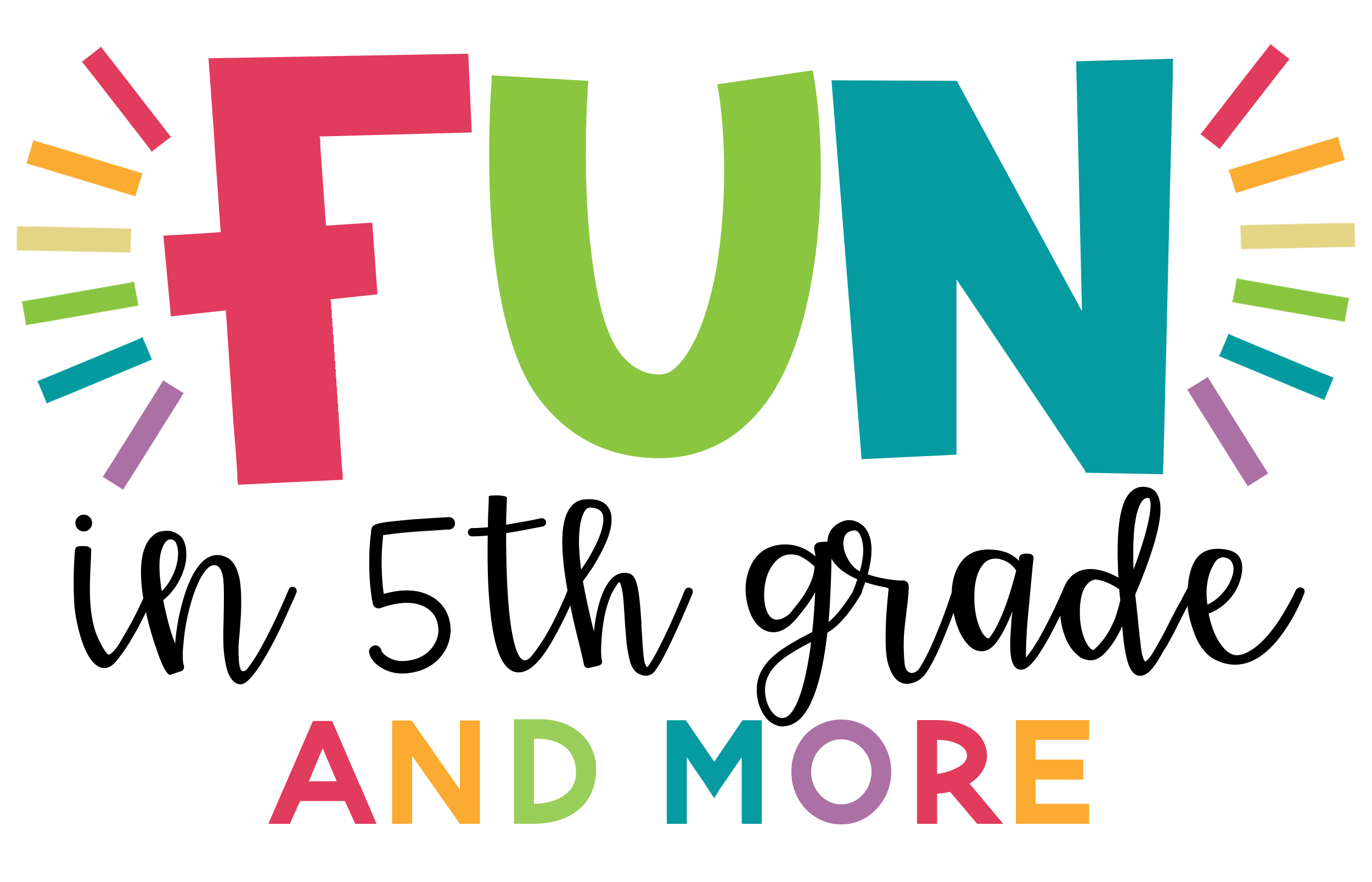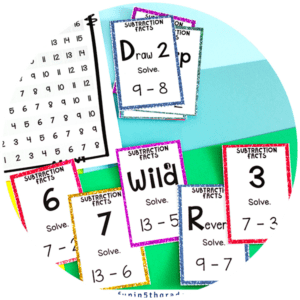Get your students ready for the testing season with these test prep strategies for reading in upper elementary.
To play the game well, you have to know the rules. True test prep is all about knowing the rules so you can help your students increase the odds of success.
Playing the Testing Game
When I was a child, I learned how to play softball. I had watched others play, and I had a pretty good idea of how to play, but it wasn’t until I was working through drills with the coach that I really started to understand how decisions were being made and how specific calls were being made to reach certain goals.
For example, if the coach brushed his hand over his shoulder while signaling to the batter, then she was supposed to bunt. The bunt would then set off a series of events for the other players who were already on the bases.
If we were playing defense in the field, and there was a runner on first, then best practice for the infielders was to try to get the ball to second base rather than throwing to first right away.
All sports are really a series of choices that make up best practices, much like a multiple-choice test, there are always several options, but one of them is typically considered ‘best’.

Teaching students about the best testing strategy is about teaching them to play the game.
In previous posts, we have discussed how to reinforce content before testing with resources like Game Shows or how to create a 30-day plan for building up students’ content knowledge leading up to test prep season, but today is not about knowing the content, it’s about knowing how to test well.
Even when students know the content, they will still come across one or two questions that stump them. That is when good test prep strategies for reading could at least help them narrow down their options or consider the question from a different perspective.
Test Prep Strategies for Reading
Reading comprehension tests are often passage based questions that require students to answer different types of questions related to the passage. These questions often have 4-5 potential answer choices, and in typical testing fashion, it is not uncommon to see a ‘distractor’ answer…which is meant to be viable enough to make students pause and think about the question more deeply than they otherwise would have.
The test prep strategies for reading that we are going over today all have viability in helping students to ensure that they have truly considered each question; however, if your test is timed, you may find it most beneficial to focus on just a few strategies from this list instead of all of them.
Using Close Reads to Practice
We love using close reads to practice testing scenarios because they are most closely related to the types of questions and passages that we typically see on state tests.
Our Close Reads with Mystery Pictures come in a variety of topics and themes to allow for teachers to work on testing strategies with students year-round without feeling like they are only teaching how to test. Consider downloading the Crayon-Themed Freebie to get a better example of how these close-reads can be used to practice the test prep strategies for reading below!
#1 | Read ALL directions and questions carefully.
This may go without saying, but reading the question carefully and identifying what is actually being asked is an important part of testing. Teach your students to key into specific phrases, or even underline the parts of the question that identify what the question is asking for.
Does the question want a definition or a quote? Is the question asking for a paraphrase or a word? A synonym or an antonym? Before you can answer the question, you have to know what the question actually is.
#2 | Number the paragraphs in the passage.
Taking the time to number the paragraphs in the passage can save the tester time as often questions will ask for information from a specific paragraph and being able to quickly identify that paragraph can help save time. Check previous versions of your tests to figure out if this step is already done for your students. Some state and standardized tests will number the paragraphs or lines for the students, so review the tests your students will be taking to figure out if this is a step they’ll need.
#3 | Read passages and highlight key info.
Upon first reading of the passage, encourage students to highlight information that seems to be important. If the passage is explaining the steps of a process, they may highlight the transition words. If the text is fictional, students may highlight the details of the story that seem to be most important. Practicing highlighting passages over time will help students be better prepared for this step when testing time rolls around. If your students regularly work through Close Reads with Mystery Pictures, then they will be used to doing this step as part of their process.
#4 | Read questions and make predictions about answer choices.
Depending on time, #4, #5, and #6 on this list could all be done at once, so let’s break them down one at a time.
Since students have read the passage and the questions, they are now going to focus on the answer choices. Personally, I like to have students cover up the answer choices, read the question, and then answer the question themselves BEFORE looking at the answer choices. Then they know that if their answer is there, the likelihood of the answer being correct is much higher.
If their answer is not there, then moving on to steps #5 and #6 should be their next move.
#5 | Read ALL Answer choices and star possible answers
Often students will read the first answer, see something they like, and pick it as the answer without reading the other choices. This is NOT a good strategy because many questions ask for the ‘best’ answer rather than just a correct answer. Teaching students to read ALL answer choices before making a selection is really important to testing well.
Since there may be more than one possible answer, encourage students to star any answer that is possible before choosing an answer. From there, they can narrow down which is most probable.
#6 | Eliminate wrong answers only if you are SURE.
This step can really help students feel more in control of the testing situation because it encourages them to get rid of options.
If you know for sure that an answer is not right, cross it off, so that minimally, if you have to guess at the answer, you have a better percentage at getting the answer correct, but it also just gives the students fewer options to prove or disprove with evidence from the text.
#7 | Read the passage and mark up the text.
Reading through the passage in full and marking up the text will help students focus their thoughts among all the details of the passage. Using and working on close reading strategies throughout the year will make students even better at this step when test time rolls around. In all of our Close Reads, we provide ‘Mark it Up’ pages to help guide students through this process, and if your students are doing these close reads regularly throughout the year, they will be comfortable with this process when the time comes to test.
If you don’t have it yet, make sure to download this Crayon-Themed Close Read with Mystery Picture Freebie to help you prepare for the testing season!
#8 | Read questions again and choose an answer.
Throughout this process, we have asked students to read the question carefully, work through the passage twice, eliminate obviously wrong answers, and ‘star’ potential answers, and now it is time to select the answer they feel best answers the specific question being asked.
Although some students will make this their last step, we strongly recommend not skipping step #9 (time permitting)!
#9 | Find text evidence for your choice.
I have often heard teachers telling students to ‘check your answers’ during tests, but they don’t explicitly explain what they mean by that.
Instead, we suggest telling students to find evidence to support their answers.
Again, if the test is timed, tell students to skip this step until they complete the whole test, and then go back through the questions and find evidence to support their selected answers.

Know the Test You’re Prepping for!
Do some research on the test you are preparing for and make sure to suggest strategies to your students that will best support them on that specific test.
The test prep strategies for reading in this post are based on students being given passages that they then use to answer a series of questions, but if your state test uses short paragraphs instead of full passages, you may be more selective with how you teach these strategies…they will still work, but you’ll want to teach students how to use them differently.
If your state test uses shorter, paragraph-length passages, then the Game Show slide passages and the Sticker Style passages may be great ways to practice for those tests.
Testing, like softball, is an opportunity for students to show off the skills they’ve been practicing, but even for students who know all the content and have all the skills, tests have been known to throw a few curve balls that cause them to hesitate. Knowing good testing strategies can help students narrow down possible answers, and improve the odds that, at the end of the day, they will leave victorious.





